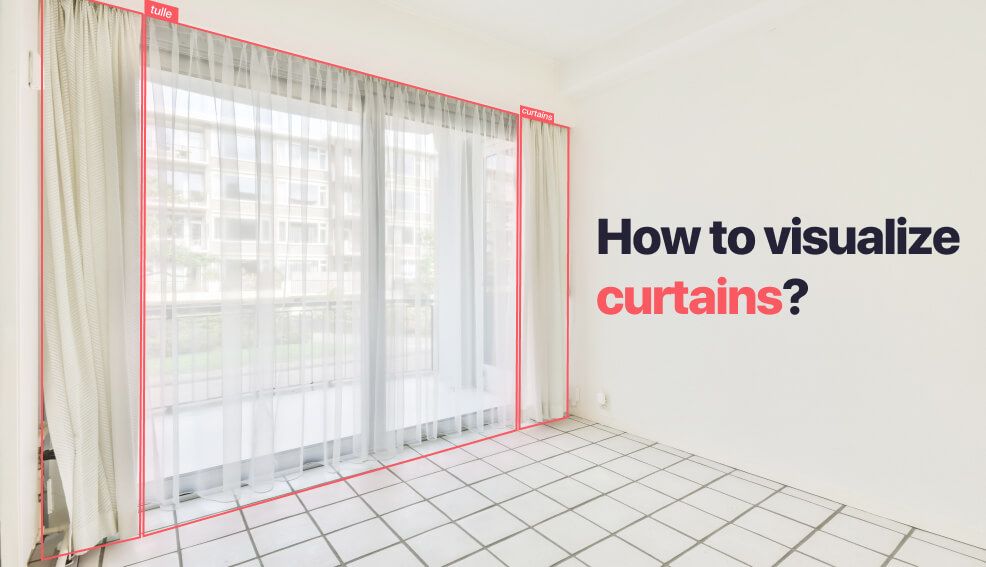Vision API: How to Visualize Different Curtains in the Interior

Curtains can play a crucial role in the overall look of a room, but selecting the right curtains can be challenging for your customers. To help your clients, you can create innovative interior visualizers and automation applications. And Vision API, with its wide range of features, including object detection and segmentation, will provide your software developers with all the necessary tools.
In this article, we'll demonstrate that Vision API is a very adaptable technology that can be used in a variety of design scenarios and explore how to use our tools for curtains visualization.
Want to test Vision API? Request a free trial →
Start visualizing curtains with advanced computer vision algorithms
Say you wanted to visualize how a set of curtains would look in a room. For this, you can use the Vision API to automatically detect the windows in the photo and apply the selected curtains to the appropriate areas. The API uses advanced computer vision algorithms to calculate surface dimensions, creating a realistic visualization that accurately reflects how the curtains would look in the room.
The process will be pretty similar to what we already demonstrated in the Roman shades visualization example.
Let’s use the following interior photo as an example:
Before visualizing curtains, it's essential to get all the parameters and properties of windows. For this, we'll use some Vision API capabilities to get the information we need.
Get a segmentation mask
First, we’ll use the Segmentation API to get a segmentation mask of the surfaces in the scene:
The purple area in the resulting mask image represents the window surface, and the slope and sill of the window are represented by tiny brown and dark green areas.
Find camera position
Next, by using the Analysis API, we obtain the estimated camera position and its properties. The Reconstruction API, in its turn, provides us with a set of relative 3D coordinates of the window:
Calculate window parameters
Then, the Reconstruction API can calculate the approximate width and length of a window, as shown with the lines in the image:
Visualize curtains in the interior
Finally, we can use 2D or 3D materials of curtains sample to visualize it on top of the window surface using the segmentation mask and window dimensions we got previously:

Conclusion
Curtains visualization with Wizart Vision API can be a game-changer for businesses that sell curtains, as it allows customers to see how different curtains would look in their space before making a purchase. This can lead to increased sales, customer satisfaction, and fewer returns.
Moreover, curtain visualization with Wizart Vision API can be used by interior designers to help their clients visualize different design options. This can help to streamline the design process, save time, and provide a more satisfying experience for clients.
Whether you are a business that sells curtains, an interior designer, or a developer looking to add cutting-edge computer vision functionality to your applications, Wizart Vision API is an exciting and powerful tool that can help you achieve your goals.




